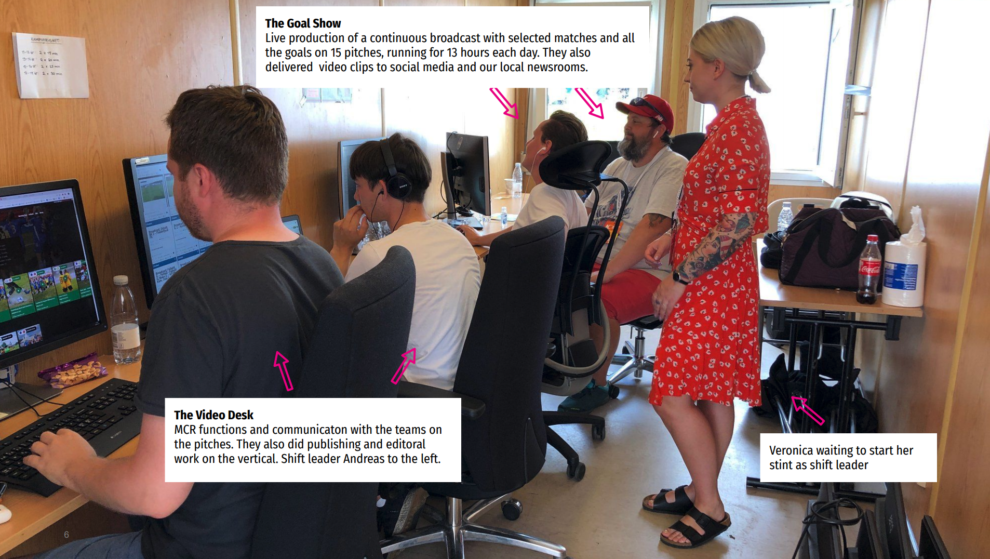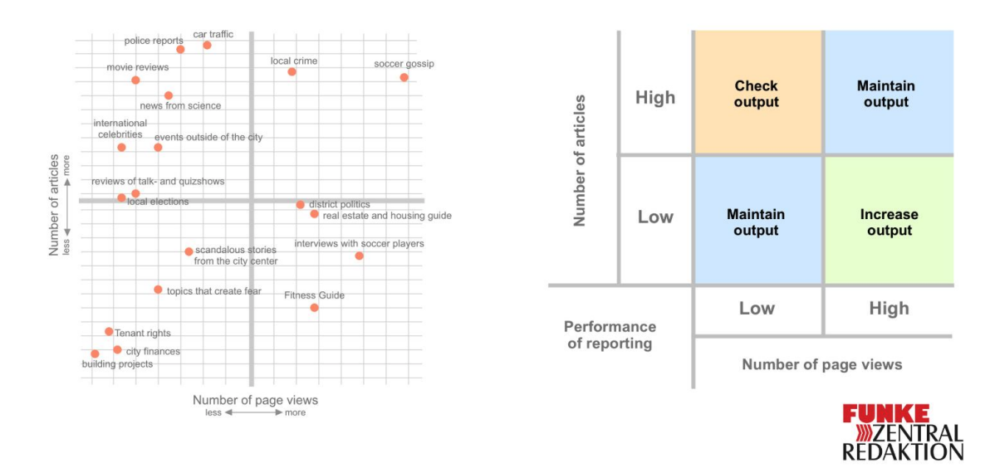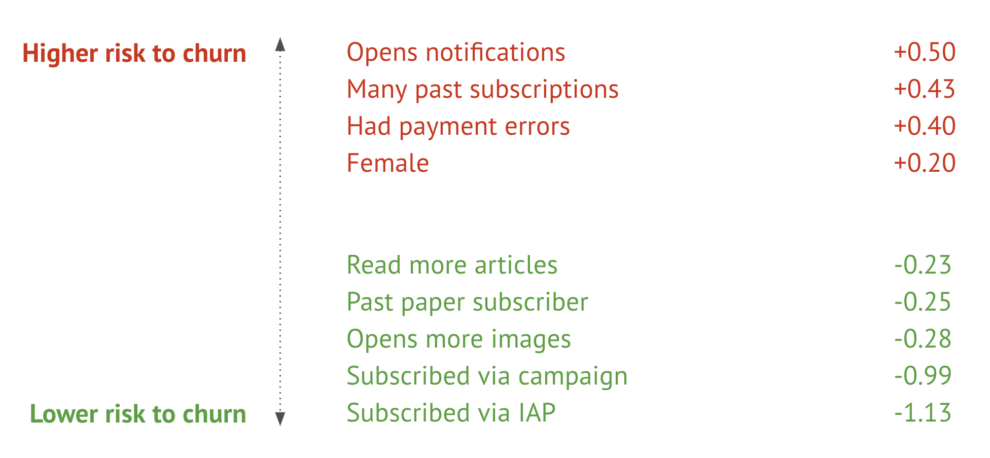Blog
3 lessons from the latest news media innovation winners
While there may be different unique contexts or local landscapes, the global news media industry faces many of the same challenges and opportunities. That is why it is so important for publishers to learn from one another, something we encourage in our community of international media executives. We are joined in that mission by INMA, who highlighted some of these strong ideas in their 2020 Global Media Awards ceremony this week. From 922 entries representing 44 countries, 185 were selected as finalists. Today we’re exploring some of these award-winning innovations and understanding what broader lessons publishers can take from these ideas.
1. Create content for your die hards
Amedia, the second largest media company in Norway, won first place for their idea for growing digital readership. During last year’s “Norway Cup”, the world’s largest youth football tournament, the team came up with the idea to relaunch their sports vertical in order to attract new subscribers and engage existing subscribers. With this relaunch, their Direktesport vertical product expanded from covering 150 matches of the Norway Cup to 800 matches. To achieve this, they converted an old shipping container into their working station — something the team is proud of as they note the traditional broadcaster covering the tournament had to bring in a full bus as their working space.
During the weeklong tournament, 2,864 new subscriptions were sold while 40-60k subscribers watched every day. So what can we learn from this experience? While our tech team was happy to see one of Amedia’s key takeaways is to “love your developers“, there are broader learnings as well. We have seen before how powerful the sports vertical can be in converting and retaining subscribers — it is one reason why The Athletic has been so successful. But this isn’t the only vertical that has die hard fans, publishers should explore what content has loyal audiences and create products for those readers specifically. For example, another winner was Ouest-France for their podcast strategy. One of their successful podcasts is focused on the 2020 municipal elections. For these local elections, the editorial team created a series of 30 episodes, with each one focused on a specific city and all the political challenges in that area. This hyper-local focus, along with their other innovative podcasts, helped them to grow to 450,000 monthly listens, up from 100,000 last year.
2. Listen to your community
Tortoise Media, based in London, was a finalist in the category for best use of an event to build a news brand, thanks to their “ThinkIns”. This relatively new digital news startup was founded in the mindset of ‘slow news‘ with the goal of putting news out only when it was ready, not just as it happens. They have taken this innovative approach with their audience engagement strategy as well. Each ThinkIn is a live, completely unscripted conversation between Tortoise journalists, members, and invited guest speakers. With these conversations, the team is able to hear directly from members, as well as providing a forum for civilised disagreements on today’s important topics. Not only does this provide a great way for the team to better understand their audience, it has proven to be a strong acquisition player as well. 60% of their nearly 30,000 members were referred by another member. That’s why each member receives 10 complimentary tickets to share with friends and family to encourage them to attend a ThinkIn and see for themselves the difference Tortoise Media is making.
Tortoise Media takes the advice of ‘listen to your readers’ to a new level, but all publishers can benefit from this. In order to ensure you create content and products that are valuable for your audience, take a look at what your readers are telling you with their behaviour. That’s what Funke Media Group in Germany did with their project to understand what topics are most engaging for their audiences. Through comparing the various topic clusters against their performance in the areas of reach and retention, they were able to find the topics for which they were generating a lot of content but did not have much interest from their users. As part of this project, they created a daily internal newsletter that summarises which articles from the previous day worked well for converting new subscribers in order to give the newsroom inspiration for where to focus their work.
3. Visualising churn to increase engagement
The use of data and analytics in the award-winning innovations was a clear differentiator.
For MittMedia (now Bonnier News Local), their focus on data came after a year of various efforts that helped to reduce churn. They started to plateau, stagnating at a churn rate of 12%. So they decided to build churn models in order to understand where they were losing their subscribers. Some interesting insights came out of this work, such as readers that received 20 or more push notifications in a month were cancelling their subscriptions earlier than others. They also saw that women were churning proportionally more than men; in the first 100 days alone, they lost 10% more women than men. To correct this, they undertook an editorial initiative to understand how they were presenting gender in their articles, so they took actions to write in a more balanced way.
For The Wall Street Journal, the use of data in the fight against churn meant they mapped out all actions readers could take and the associated impact on churn. The result of mapping all these actions out was startling: there are many more actions that can improve retention than just downloading the app or subscribing to a newsletter. For example, they found that using puzzles increased retention significantly, but only a very small portion of the audience had played a puzzle. This work has helped to decrease member churn by 3 points. For more on “Project Habit”, make sure to see the interview with Anne Powell, Director of Member Engagement, in our most recent research report “Habit Forming News Products“.
Russmedia in Austria was also a winner for a similar project in which they gamified the push to encourage users to try out various features. In their “Engage Me” project, users were able to collect points for actions such as commenting, sharing articles, or taking part in a quiz. Those points can then be exchanged for prizes or used to donate to good causes. This project helped Russmedia increase the number of logged-in users from less than 1% to 19.7%.
Finally, we were proud to receive 2nd place along with The Times for our work on JAMES Your Digital Butler. During the initial one year project, a team of 20 people from both of our organisations worked to develop an AI technology for the news industry that could increase reader engagement through personalisation. Through this work, The Times was able to observe a 49% reduction in churn. Now we are working to bring this personalisation technology to other publishers through our Launch Partner Programme. With Round 3 closing shortly, we are already live in production with another partner. We look forward to sharing these results with our community as well in the future.
Other Blog Posts

Stay on top of the game
Subscribe to Twipe’s weekly newsletter to receive industry insights, case studies, and event invitations.
"(Required)" indicates required fields




